Last-Minute NYC Holiday Gift Guide 🎁
We’ve created a holiday gift guide with presents for the intrepid New Yorker that should arrive just in time—


Yesterday afternoon, two historic events occurred. First, the oldest known, unopened time capsule was opened with ceremonial pomp at the New York Historical Society. As we published about earlier, the bronze capsule was deposited by the Lower Wall Street Business Men’s Association in 1914 for an intended opening date of 1974, but it missed its date with destiny due to miscataloguing. Of most interest is that in the capsule there was believed to be a copy of a letter written in May 1774 at the Merchants’ Coffee House, believed to be the impetus for the united colonies and the American Revolution.
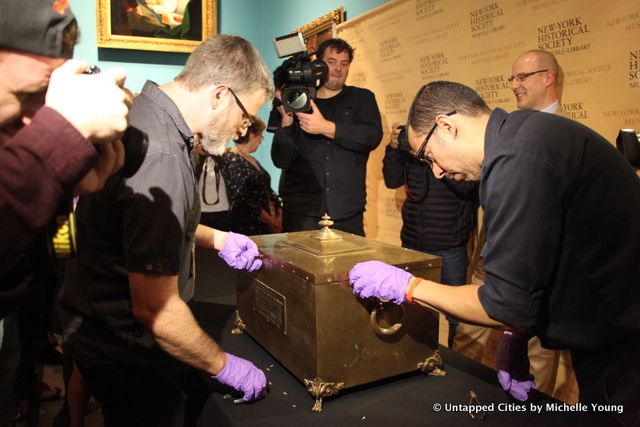
Equally historic was the showcase of a new batch of objects curated by New York high school students to be deposited this week into a time capsule to be opened in a century (see below for what went in). It took about five minutes to unscrew the bolts all around the bronze capsule. Everything inside was wrapped in brown paper or placed in envelopes, labeled with the perfect cursive handwriting so prevalent in the previous centuries. While many of us wondered if there would be crazy contraptions or items that marked the popular cultural sentiment of the time period, speaker Nick Yablon warned us that the most common reaction at time capsule openings was disappointment.
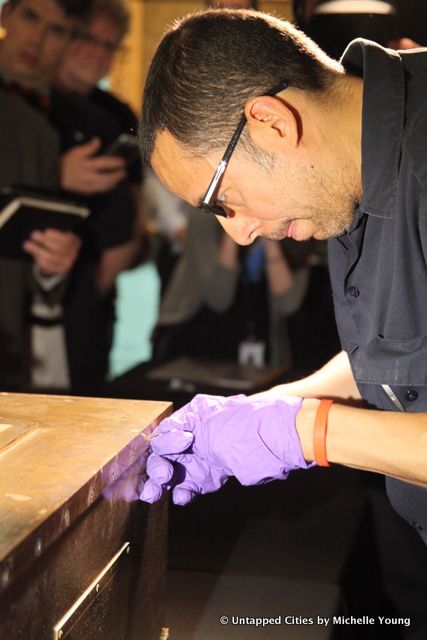
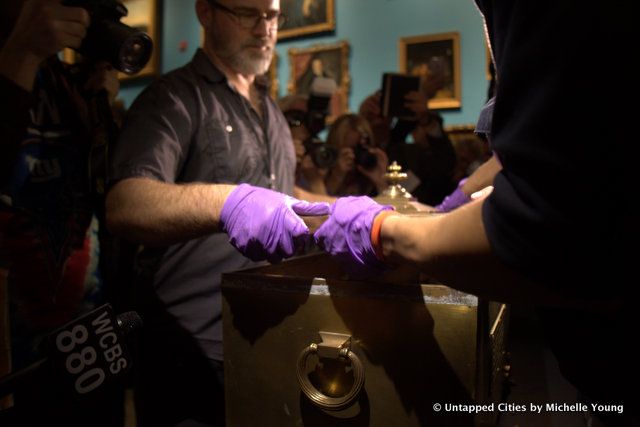
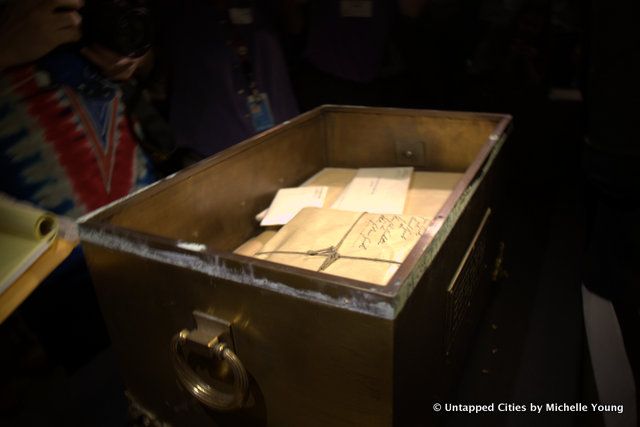
Nick Yablon is an associate professor of American Studies at the University of Iowa and a fellow at the Historical Society this year. Reflecting on the nature of time capsules, he told us that the impulse to stash objects away is ancient, perhaps universal. The craze for sending things through time have different motivations, ranging from uncertainty of new technologies, fear of future vulnerabilities, political convictions, and mystic beliefs–that photography can capture the spirit or aura of a person. Regarding the famous letter, he writes, “they were also making a historical argument that New York, and in particular the Merchants’ Coffee House, rather than Boston’s Faneuil Hall, was the true birthplace of the revolution.”
Some fun facts Yablon imparted: the term “time capsule” was only introduced in 1939 at the World’s Fair in New York. Prior, they had been named things like century chest, century box, and memorial safe. Also that there is a common confusion between cornerstone capsules and time capsules–but that they’re not the same. Time capsules are deposited with a specified open date in the future, whereas cornerstones are not.
So without further ado, some of the most interesting contents of the capsule:
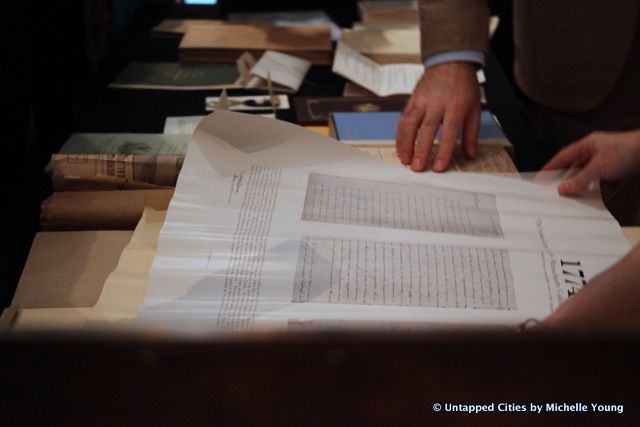
Copy of the letter written at the Merchants’ Coffee House
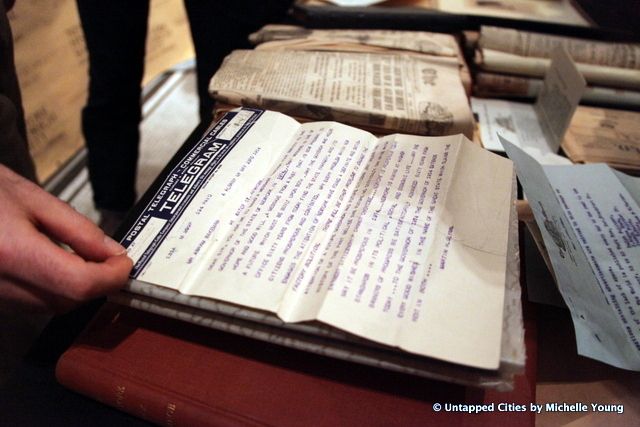
Telegram to the time capsule curator from the governor
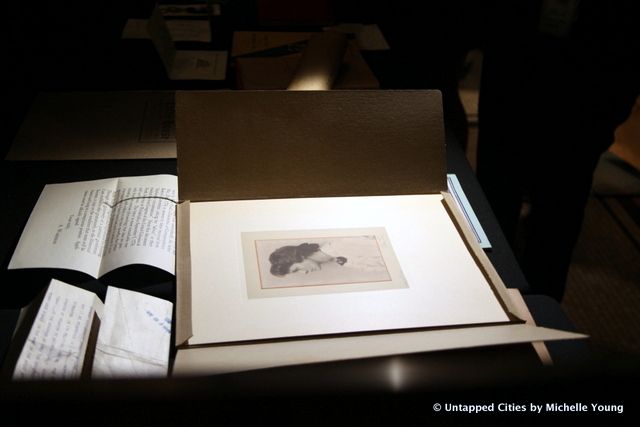
Photograph of the daughter of John Jay
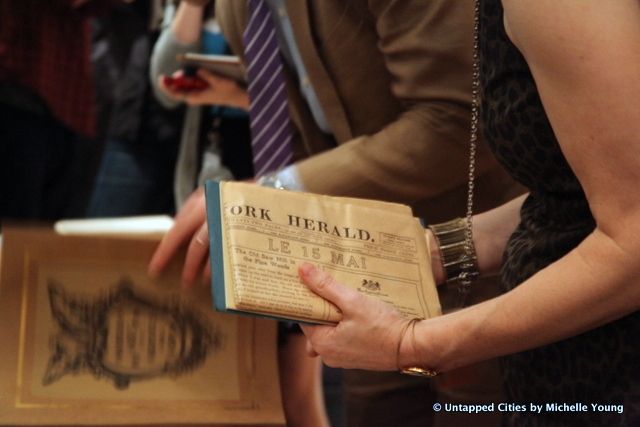
New York Herald from May 15, 1914
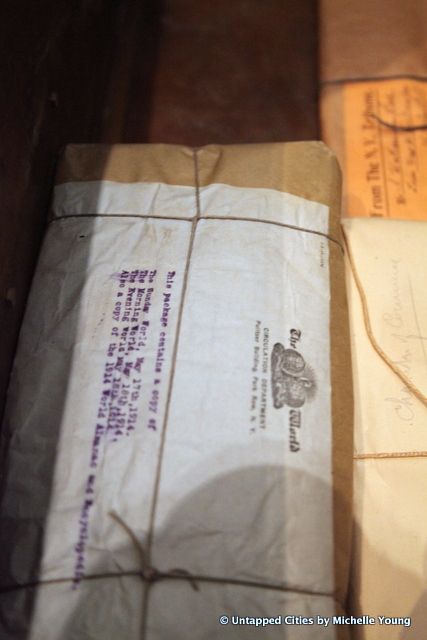
Copies of The World Newspaper
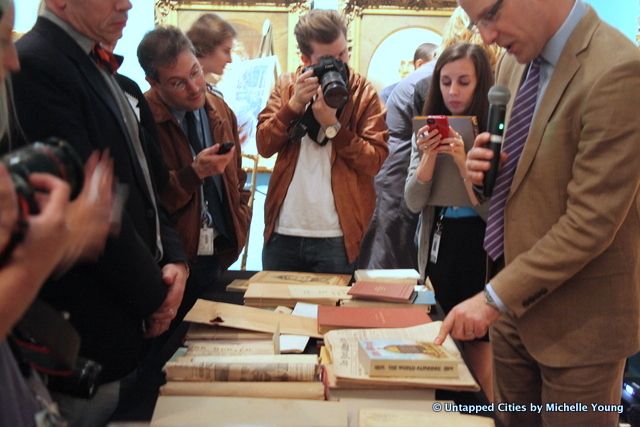
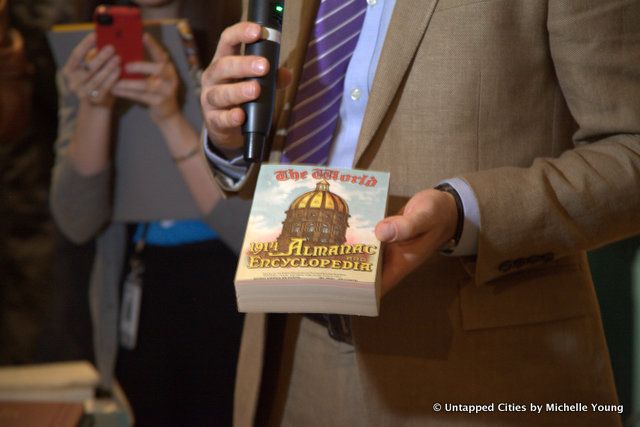
One of the few items in real color, The 1914 Almanac
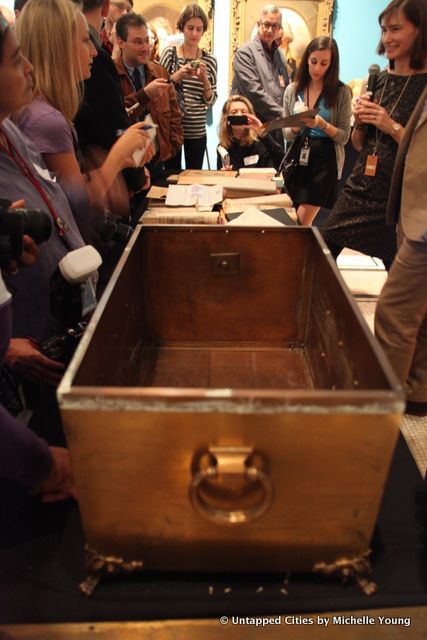
Empty time capsule
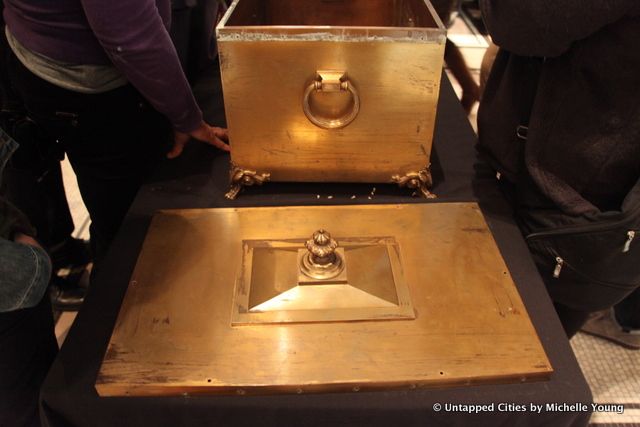
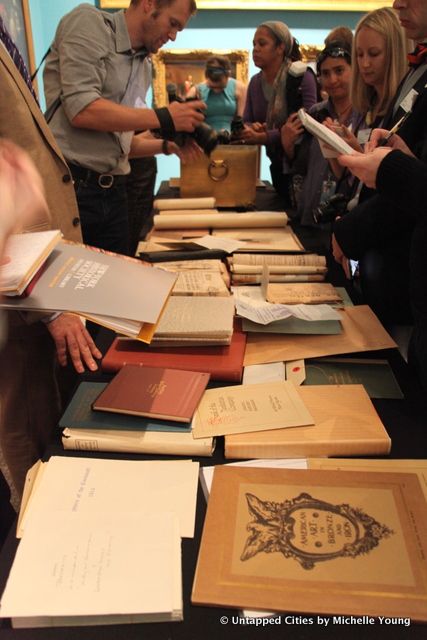
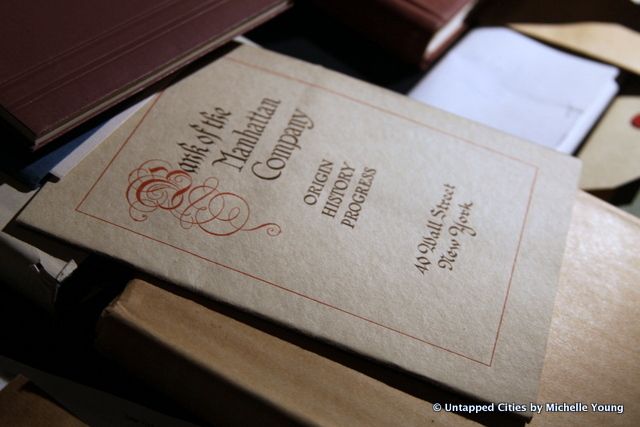
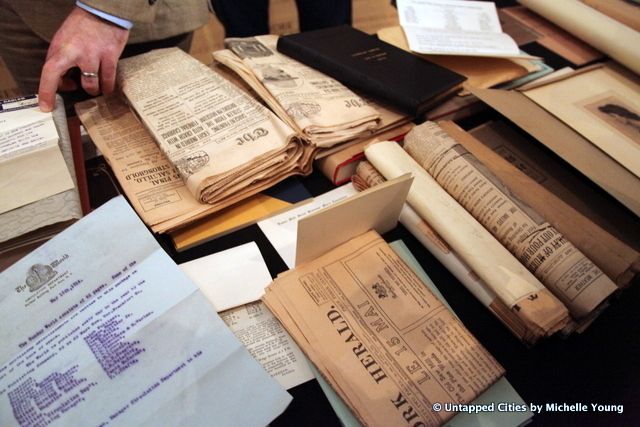
John Singer Sargent Painting announced stolen in The World newspaper
With its new open date, this time capsule marked another anniversary: the first official reference to “New Netherland” in October 1611, made via charter to the New Netherland Company. Meanwhile, it will be determined this week if the 2014 time capsule by the student historians in the New York Historical Society internship program will go in the bronze time capsule. The 1914 instructions were to reseal the original contents for another 100 years, but the Historical Society has determined that the items will be more useful to scholarship if able to be examined.
The Lower Wall Street Business Men’s Association seemed to aim for items that reflected their place in this world and the work of important institutions at the time, particularly at the dawn of the First World War. The students of today have looked backwards and forward, marking things lost this year (5 Pointz, Roseland Ballroom), current events via newspapers and magazines, a look back at WWI from today’s perspective, technology (Citi Bike, USB key, iPod headphones), every day objects (Metrocard, Purell sanitzier, $1 bill, subway maps), to accomplishments (same sex marriage). We loved the inclusion of the MTA Fastrack changes, truly a factor of every day life in New York City.
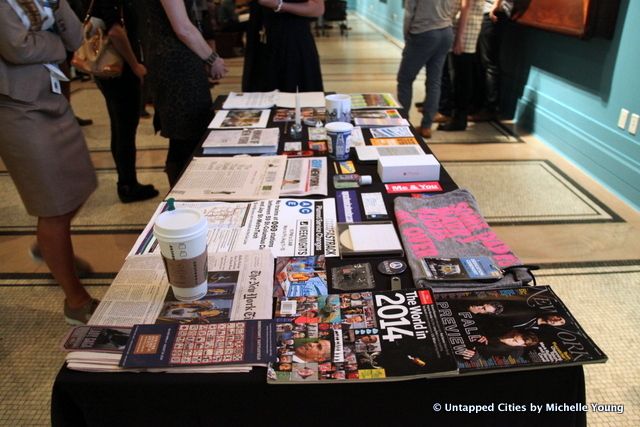
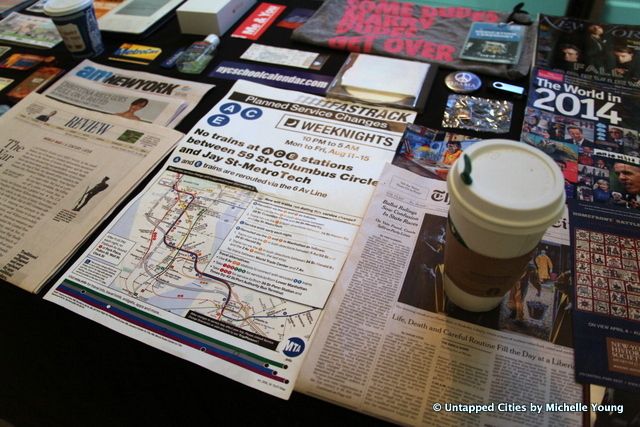
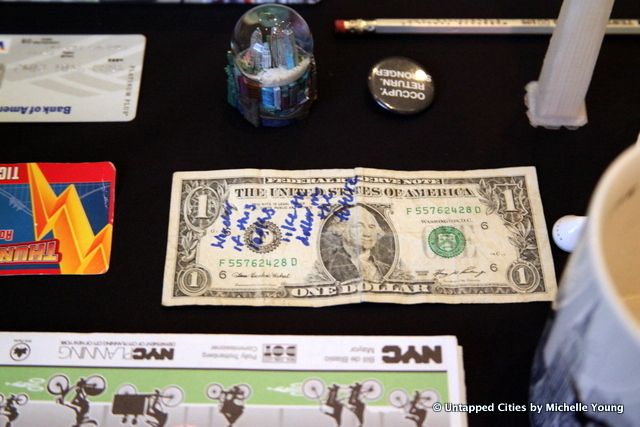
“Wonder if this looks like the dollar in the future”
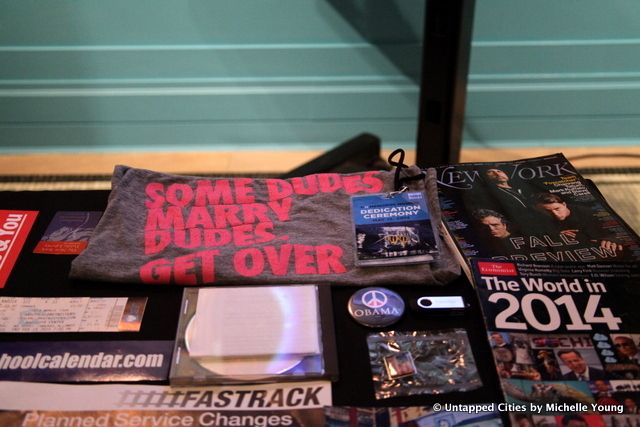
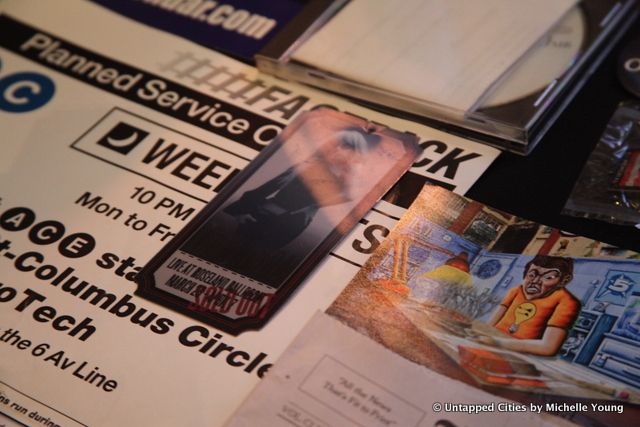
Lady Gaga ticket from last concert at Roseland Ballroom before its demolition this year
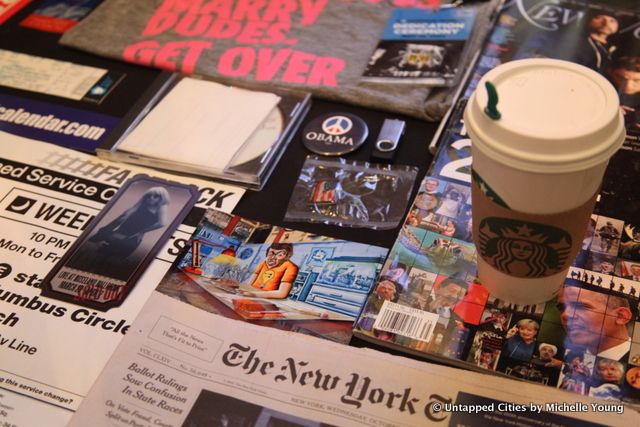
5 Pointz postcard, USB key, Starbucks coffee cup, NY Times
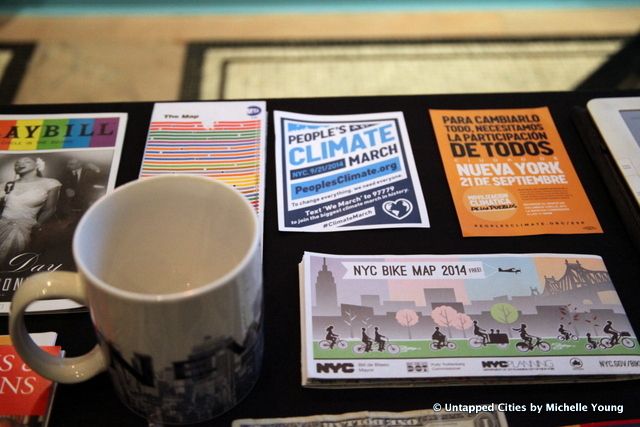
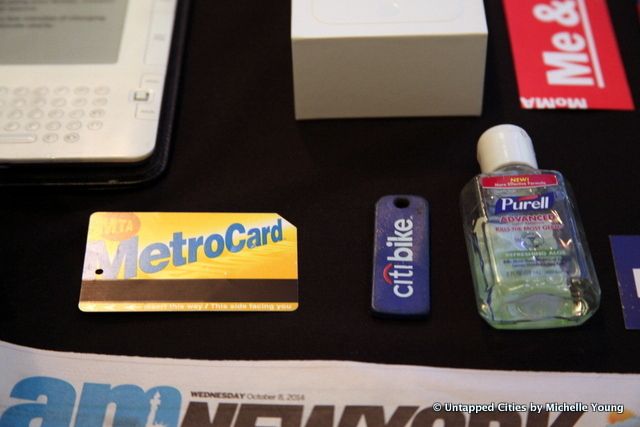
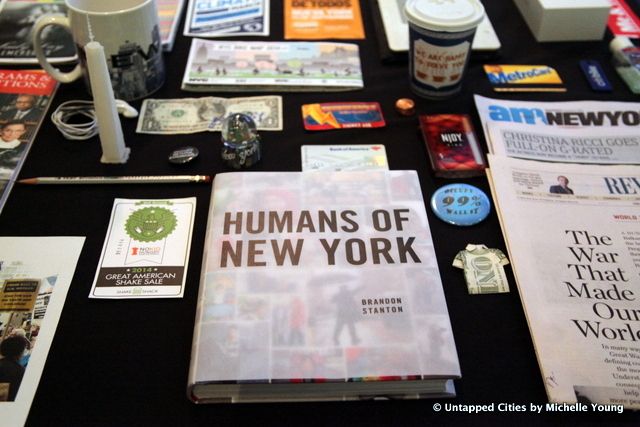
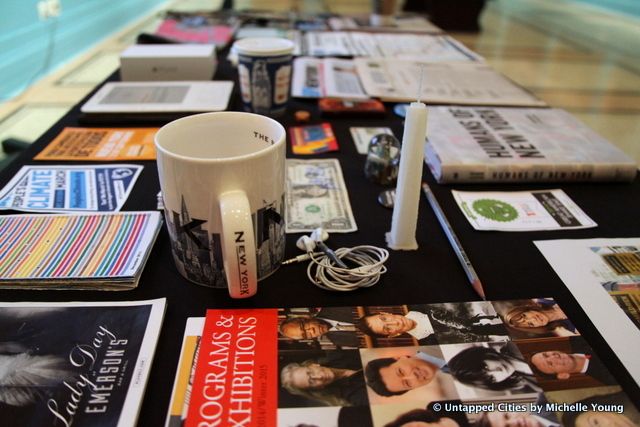
3D model of 1 WTC made by Pixel Academy, an after-school tech education startup for teens in NYC
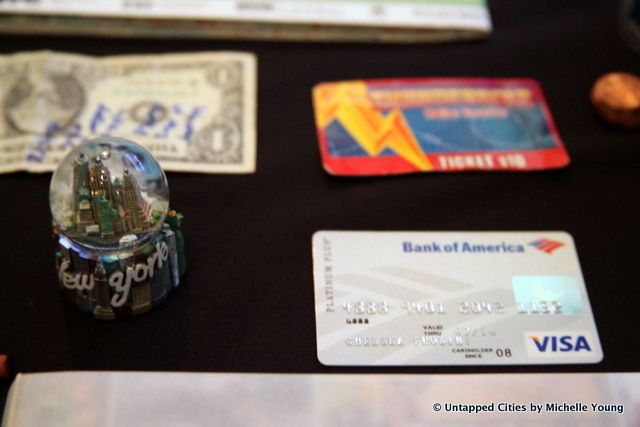
While you’re at the historical society, check out the wonderful exhibit on Ludwig Bemelmen’s Madeleine along with brand new exhibit Chinese American: Exclusion/Inclusion. Get in touch with the author @untappedmich.
Subscribe to our newsletter